To start in chronological order, we remind you that 2019 was a spectacular year in terms of the evolution of electromobility in Romania.
In 2019, we brought a BOOM of EV registrations. The most popular models being the Renault ZOE, Nissan Leaf and BMW i3, especially due to the adoption by the car-sharing and ride-taxi providers of these electric models.
The three models totaled over 1000 units registered in a single year. The year 2019 ended close to the threshold of 3000 registered pure electric units. Almost half of them are in Bucuresti.
2019 comes with an increase of ~145% compared to the previous year, or in other words, we registered with over 1000 BEVs more than in 2018.
The market share for 2019 of electric vehicles and plug-in hybrids was about ~2.2%. Meaning a level of market penetration similar to France and over the USA or Spain. At the same time, the year 2019 came with an increase in the offer of electric vehicles, available being approximately 30 models from which customers could choose. EVs alone were 1.1 %.
The main issues of 2019 were:
The small offer of electric vehicles compared to conventional vehicles. Meaning that you can not meet the needs of all customers with the offer of electric vehicles available in 2019.
Lack of complete services when it comes to purchasing an electric vehicle. The customer is not offered a complete package when purchasing an electric vehicle. Only certain car dealers train their customers on the use of a charging station, and fewer optionally offer a charging station for home.
Lack of integrated offers between the car dealer + the charging station operators + EV services at the purchase of an electric vehicle.
The non-implementation of pollution taxes such as the “oxygen tax against polluting vehicles” has slowed the increase of the market share of electric vehicles.
Lack of fast loading infrastructure in the main transit areas. Also, the lack of subsidies and incentives for EV fleets.
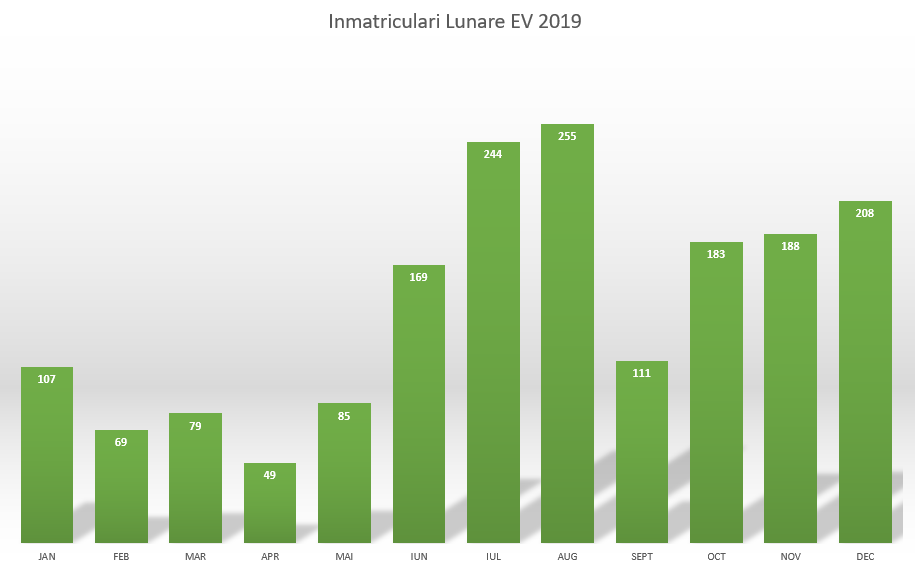
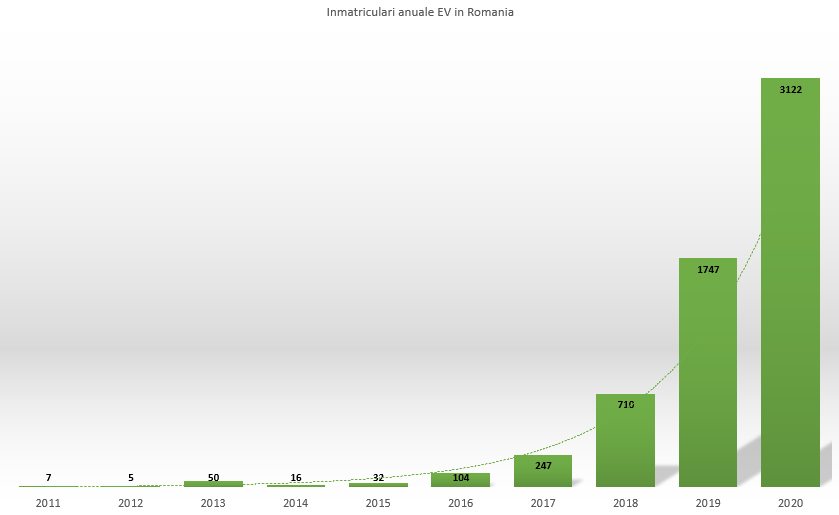

In recent years, hybrid vehicles, regardless of the type of hybrid technology with which they come equipped, maintain their market share of 6.1 %. The year 2019 comes with an increase of approximately 50% compared to the previous year.

The year 2020 brought Romania to the threshold of exceeding 6,000 registered electric models. A milestone we dreamed of reaching a few years ago, when in Norway or the Netherlands this figure was reached monthly.
The previous year brings a series of new premium electric models, a Tesla dealership approved in the Rabla Plus (Incentives) program and new accessible models.
The most important aspect of the year that has just ended is the completion of European-funded projects for the installation of fast charging stations, which has led to a boom in increasing the number of charging stations nationwide. The number of locations where we could charge at the end of 2020 is over 500 and the number of charging sockets exceeds 1000.
The year 2020 is the second year in which Rabla Plus funds are exhausted ahead of time, it is the year in which car dealers learned what they need to do to honor EV customer orders on time.
December was an unusual month mainly due to scheduled delivery of the pre-ordered ID 3 models that were acquired in the past two years before the car’s official release. Over 250 units of VW ID 3 alone were registered in the 12th month of 2020.
Over 120 000 new and 370 000 second hand conventional cars were registered in Romania in 2020. The market share in 2020 had a decrease of 21%, in a year of epidemiological crisis, with financial difficulties and parliamentary elections. Due to this and the growth of EVs sales, the share of electric vehicles is very higher in 2020 to approx. 2.3%.
The level of acknowledgement is very high in terms of the benefits of electric vehicles, but the degree of knowledge about the acquisition, use and end of life of an electric vehicle at the level of society remains very low in 2020.
The main advantage remains the subsidy of 45,000 lei granted for the purchase of an EV, being one of the largest in Europe. At the same time, in its absence, there is a fear of completely collapsing the evolution of the last years.
The year 2020 benefited from the appearance of new models in the family car class with a new battery technology that offers a high autonomy. The new battery technologies reduce the manufacturing cost of the electric models, increasing the autonomy and implicitly the degree of market penetration.
BMW i3 looses top 3 position after 5 years of leadership. Competition was high in 2020, the offer growing unlike two years ago, now to about 43 EV models available to auto-dealers.
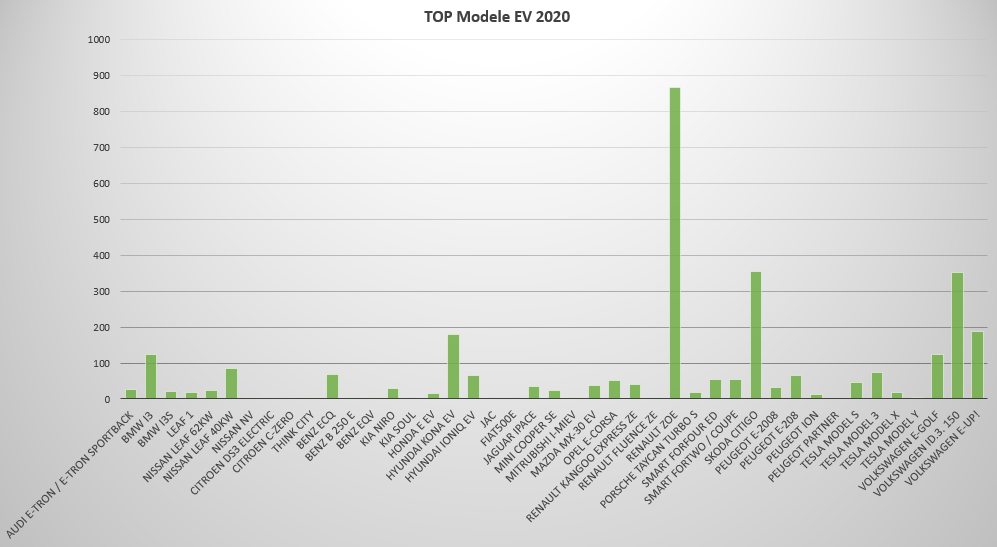
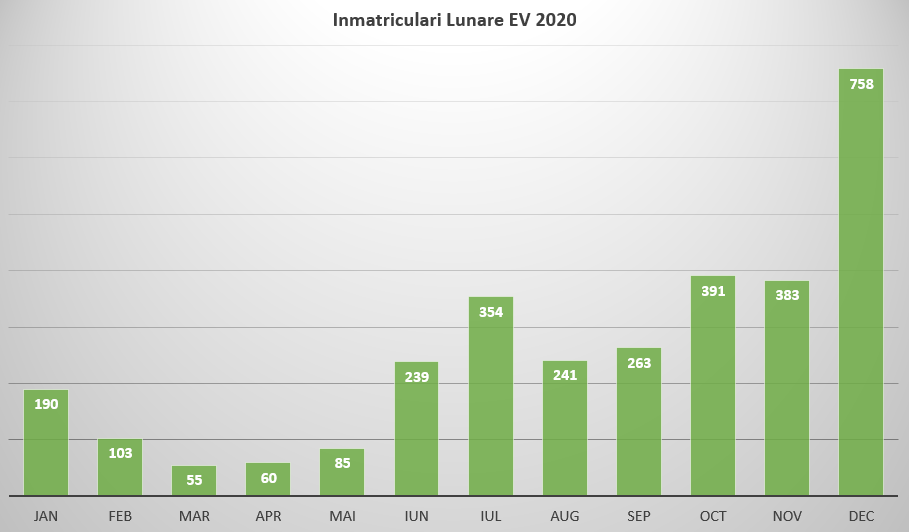
The increase in hybrid model registrations remains constant in 2020. Last year there were approximately 50% more hybrid vehicles than in 2019.
The market share of HEV + EV, greener vehicles in one year (2020) is around 9.4%.
The appearance of more accessible models also facilitated the imposition in front of the competition, an example is Mazda 3 hybrid or Ford Puma hybrid which were launched this year and reached the top.
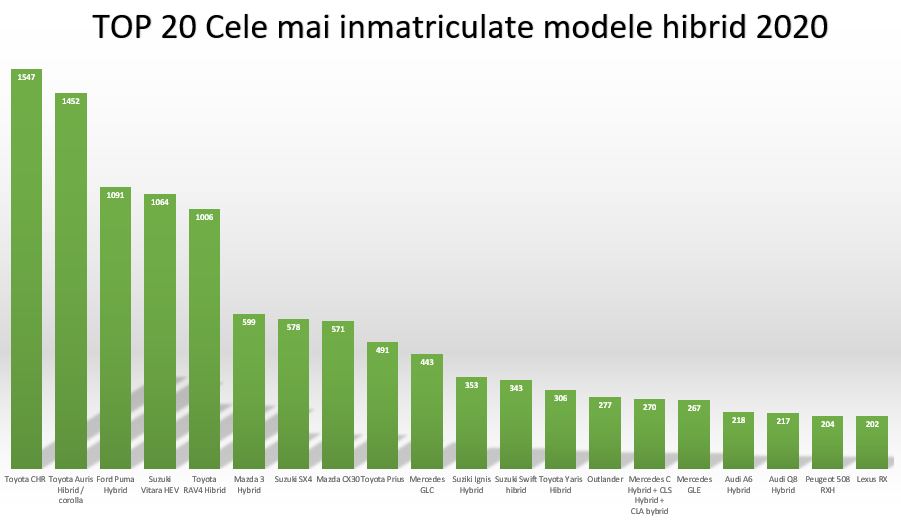
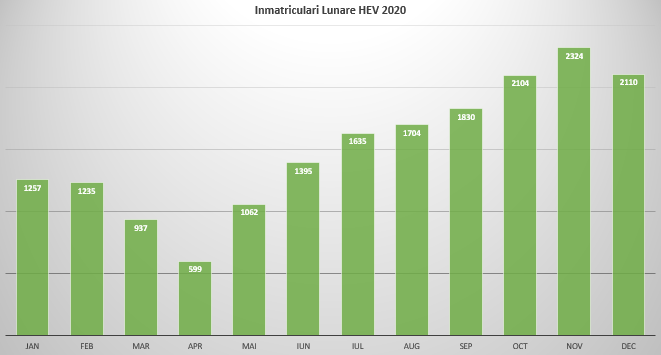
Estimates for 2021 are mainly based on the development of government charging infrastructure programs: Electric-Up where grants are awarded for the installation of solar panels and 22 kW AC charging stations for SMEs and the Charging Infrastructure program for Municipalities where City Halls reside county receive subsidies for the installation of fast charging stations.
The technology of developing NMC 911 batteries and increasing the autonomy, correlated with the appearance of new models or the reissue of the current models with face-lift variants will increase the market share.
If the economical context regarding the financial and pandemic crisis will develop in a good way, our expectations for 2021 is the 10 000 EVs milestone.




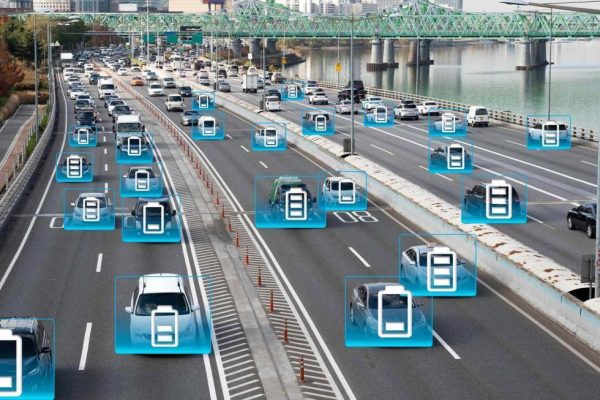
Comment(1)
Octavian says:
05/01/2021 at 8:14 pmDegeaba daca nu ai unde sa incarci